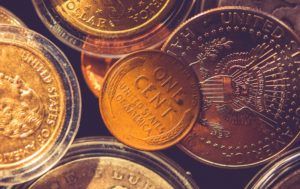Sports Trading Cards, Whisky, Vintage Cars – Is there a Bubble in the Collectibles Market?
Posted on — 1 CommentFrenzy. Hysteria. Mania.
These are some of the words being used to describe the exponential surge in the collectibles market during the COVID-19 pandemic.
Just this month alone, a football trading card featuring Tom Brady sold for a record $1.3 million. And, Christie’s set a record for digital artwork – a breathtaking $69.3 million after bids began at $100.
Online auctions for vintage cars, watches and even limited-edition Nike gym shoes and Pokémon climbed to dizzying high prices during the pandemic. The price of Rolex Day-Dates nearly doubled. In 2020, these watches sold on the secondary for $30,000. Today? They are selling for more than $50,000 on some online sites.
What’s behind this boom in collectibles?
Too much money with few places to spend it.
Governments around the globe increased the amount of money in circulation during the pandemic. And, direct government payments to Americans during the crisis has left many people with excess savings.
Indeed, U.S. bank account deposits climbed to $16.45 trillion – that’s over $3 trillion higher than the level seen in January 2020, according to the Federal Reserve. While millions have been out of work during the COVID crisis, Americans at the upper end of the economic scale have flourished.
There is simply excess liquidity – too much money flowing around the financial system with people looking for places to put it.
Bonds offer negative real interest rates. And the stock market sits at frothy, overvalued levels. Some wealthy investors have turned to more creative, or some even say wacky investments during the pandemic.
In a recent New York Times article: “From Crypto Art to Trading Cards, Investment Manias Abound” Howard Lindzon, a venture capital investor said: “It’s just a pent-up cycle where the money has nowhere to go, so it’s doing stupid things.”
“Most people are cheering, but at the same time, shaking their heads and going, when is the bust coming?” said Jane Leung, the chief investment officer at SVB Private Bank added.
How to recognize a bubble.
There are four conditions needed for an investment bubble to form, according to William Bernstein, author of The Delusions of Crowds. These are: easy credit, new technologies, amnesia about the prior bubble and bust, and the willingness to forego tried and true methods for valuing investments.
Let’s run through the bubble checklist to see where we stand now.
- Easy credit? Yes.
- New technology – electric cars, blockchain, digital art – another yes.
- Amnesia about the last bear market? Last year’s stock market plunge was so short-lived (and historically abnormal) that you can say it doesn’t count. That leaves us going back to the 2007-2009 Global Financial crisis and stock market plunge. That bear market took four and a half years to recover. Remember that? We thought you might not. Another yes.
- Traditional valuation. Umm, just look at Bitcoin, which has zero intrinsic value. Another yes.
Are you looking for an exciting space to expand your alternative investments?
Rare coins and gold bullion could be a good fit for you.
Do you want true value? Unlike sports trading cards, whisky and digital art, central banks around the world invest and hold physical gold for the long term.
In fact, global central banks own more than 30,000 tonnes of gold as part of their monetary reserves. Central banks are the ultimate long-term gold investors – with many holding gold in their vaults for decades.
Here’s what the Dutch National Bank said about gold in 2019:
“Gold is the perfect piggy bank – it’s the anchor of trust for the financial system. A bar of gold always retains its value, crisis or no crisis. This creates a sense of security.”
Tangible assets like gold and rare coins are a recognized store of value and a secure investment that has delivered double digit returns in recent years.
Want exciting? Check out this 1854 $3 Gold Piece or an 1857 $1 gold nugget rescued from the SS Central America shipwreck. Or nothing says stability and security like a 1 kilo gold bar.
Some wealthy investors are chasing a collectibles markets that may go bust. Don’t get caught with a safe full of Pokémon cards or a Rolex watch you never wear when the collectibles bubble pops.
Want to read more? Subscribe to the Blanchard Newsletter and get our tales from the vault, our favorite stories from around the world and the latest tangible assets news delivered to your inbox weekly.
1 thought on “Sports Trading Cards, Whisky, Vintage Cars – Is there a Bubble in the Collectibles Market?”
Comments are closed.








i have been buying gold since 1992. I have seen the rise in value or better the decline in the dollar.
i bought gold with every paycheck since. i believe that the only true money is gold and silver.
you are spot on. The rest of the markets are real. My rule of thumb is buy want you enjoy in life.
if you are chasing money you will very disappointed in the end. Gold is not an investment, it is a wealth protector.